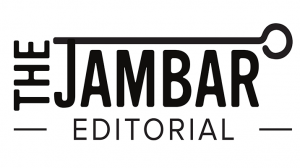Over the weekend, a man walked into a D.C. pizza parlor with an assault rifle. He told police he was investigating a fake news story that claimed — without evidence — that Hillary Clinton was using the restaurant as a front for a child sex ring.
This is only the most extreme consequence of a problem that has been the result of much navel gazing by those of us in the media following the election.
A recent study conducted by Stanford’s Graduate School of Education “shocked” researchers when it found that only a quarter of middle, high school and college students could tell the difference between a fake news story and a real news story. Stanford’s own students couldn’t tell the difference between research papers from mainstream and fringe sources.
The “pizzagate” story that inspired this weekend’s incident was shared by Gen. Michael Flynn, who will serve as President-elect Donald Trump’s National Security Adviser.
Signaling the extent of the problem, the Oxford English Dictionary named “post-truth” the international word of the year. They define the word as “relating to or denoting circumstances in which objective facts are less influential in shaping public opinion than appeals to emotion and personal belief.”
It’s understandable that this would inspire turmoil in the media; we purport to trade in facts. It also undermines democracy. The founders wrote about the dangers of letting personal emotions overwhelm reason and logic. On Anderson Cooper 360 this week, Brian Stelter pointed out that people in power benefit from confusion, from competing narratives, from a sense that nothing is really true.
So what can we do about it? There needs to be a focused effort to increase media literacy in America. With the rise of social media and the democratization of publishing, we can no longer rely on gatekeepers to separate fact from fiction. The ability for the average citizen to assess the credibility of information becomes an essential skill.
Colleges and universities — and even high schools — need to focus on equipping students with the critical thinking skills necessary to discern truth from propaganda. One could argue that teaching media literacy in high school is now more important to creating an informed citizenry than teaching trigonometry.
The editorial board that writes editorials consists of the editor-in-chief, the managing editor, the copy editor, and the news editor. These opinion pieces are written separately from news articles. They draw on the opinions of the entire writing staff and do not reflect the opinions of any individual staff member. The Jambar’s business manager and non-writing staff do not contribute to editorials, and the advisor does not have final approval.


